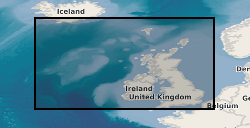2500000
Type of resources
Topics
Keywords
Contact for the resource
Provided by
Years
Formats
Representation types
Update frequencies
Scale
-

The data shows the location of seabed and sub-seabed samples collected from the UK continental shelf, held by BGS. A BGS Sample Station is a general location at which sampling with one or more equipment types, such as borehole, grab, dredge, has been used. Historically, all deployment of equipment was recorded with the same coordinates so the data shown here will often show several sets of data at the same location. Newer data will begin to show distinct locations based on an equipment type. This layer shows all the BGS Sample Station Locations, including those where the Sampling was unsuccessful. The layers below are divided into distinct equipment types, plus a separate layer for unsuccessful sampling. BGS Sample Station Locations can have a wide range of potential information available. This can vary from a basic description derived from a simple piece of paper up to a complex set of information with a number of datasets. These datasets can include particle size analysis, geotechnical parameters, detailed marine geology, geochemical analysis and others. Prices are available on further enquiry.
-

The UK Compiled Topsoil Dataset (UKTS) is the most extensive topsoil geochemistry dataset for the UK available at the time of release (August 2024). The dataset consists of 82 georeferenced TIFF raster images (GeoTIFF format) with a cell size of 500 x 500 m, displaying the predicted concentrations for 41 chemical elements in UK topsoil and their respective standard error. The dataset is based on the geochemical analyses of 57,966 topsoil samples collected between 1978 and 2014 and analysed by X-Ray Fluorescence spectrometry (XRF). The UKTS was brought together by combining data from the following sources: i. the British Geological Survey’s (BGS) Geochemical Baseline Survey of the Environment (G-BASE) rural and urban topsoil dataset (which accounts for 76.4% of the topsoil samples included in the UKTS) ii. the Geological Survey of Northern Ireland (GSNI) TellusNI rural and urban topsoil geochemical survey dataset (13.8% of the UKTS samples) iii. the BGS-Rothamsted Research X-ray Fluorescence Spectrometry (XRF) rural soil dataset (RR-BGS XRF), based on sub-samples held at Rothamsted Research from the National Soil Inventory (NSI) of England and Wales sample archive, National Soil Resources Institute, Cranfield University (9.8% of the UKTS samples). An atlas of the compiled topsoil concentrations for the UK is available to download (https://nora.nerc.ac.uk/id/eprint/535963) and all maps are available to view within the UK Soil Observatory website (https://www.ukso.org). The dataset covers England, Wales and Northern Ireland, and the Clyde Basin in Scotland. The GeoTIFF raster image maps were produced from the interpolation by ordinary kriging of the concentration values in the source data points, using the geostatistical wizard in the geostatistical analyst toolbox of ESRI ArcGIS 10.8.
 NERC Data Catalogue Service
NERC Data Catalogue Service